Digital Camera World Verdict
The Google Pixel 9 is an impressive all-purpose point-and-shoot camera phone that gets the basics right across the board. It misses out on advanced imaging features like Video Boost and Zoom Enhance as well as a telephoto camera found on the 9 Pro, but with the same core hardware and features matched with fun styling and durability, it could be perfect for anyone looking for a smart choice without paying Pro-prices.
Pros
- +
Reliably good photos and videos
- +
Class-leading panorama photos
- +
Playful yet durable design
- +
Impressive AI features at the price
Cons
- -
No optical zoom
- -
Video capture is good, not great
- -
Weak gaming performance
- -
Software handicaps (no Video Boost, Zoom Enhance, 50MP capture)
Why you can trust Digital Camera World
The Pixel 9 Pro and 9 Pro XL showcase the finest camera smarts in Google's latest smartphone line, but the Pixel 9 could well be the breakthrough star in the new series. It gets the same primary and ultra-wide cameras as the Pro models, a virtually identical design, processor, and overall user experience.
There are a fair few compromises to the Pixel 9's camera across both hardware and software. It misses out on a telephoto camera, and some of the more advanced shooting features, including Video Boost, which we found seriously useful in our time with the 9 Pro and 9 Pro XL.
Loaded up with Google's Pixel Studio for AI image generation, Magic Editor for photo editing, the headline camera feature - Add Me - and the promise of seven years of Android OS updates, though, the Pixel 9 still has plenty going for it, and as we'll come onto, the camera is one of its key selling points.
Google Pixel 9: design and screen
There's very little difference between the Pixel 9 and Pixel 9 Pro's design. They have the same dimensions, flat sides, front and back, and can even share cases. Both phones also have 6.3-inch screens, pack glass and metal build, and benefit from IP68 dust and water resistance.
While the Pixel 9 Pro has a polished stainless steel frame, the Pixel 9's frame is matte aluminum. As for the Pixel 9 Pro's glass back, it has a matte finish, while the Pixel 9's back is shiny glass.
Anyone after fun colors, the Pixel 9 is available in classic black (Obsidian), white (Porcelain), Winter Green, or pink (Peony), and you can get color-matched cases that look and feel soft to the touch and equally playful.
There's a USB-C port, loudspeaker, and SIM slot at the base, all the buttons on the right side, and a chunky camera bump around the back, so there are no surprises for anyone coming from a Pixel 8, aside from the much more iPhone-like shape.
The best camera deals, reviews, product advice, and unmissable photography news, direct to your inbox!
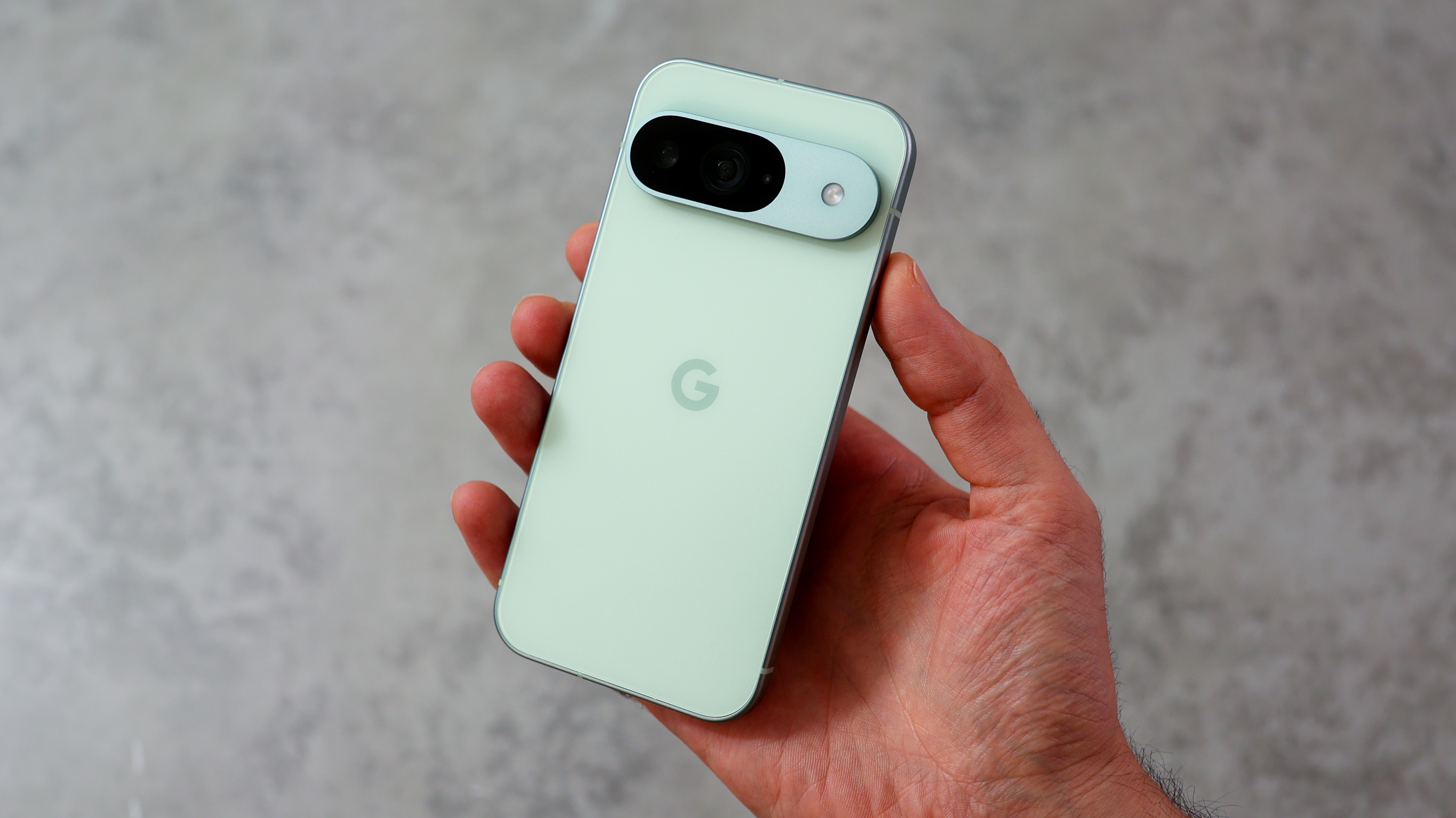



The Pixel 9's screen is the same size as that of the Pixel 9 Pro at 6.3 inches, but it's slightly less sharp, slightly less bright and the refresh rate is slightly less dynamic.
At its core, the screen is an OLED panel with a 120Hz refresh rate and peaks with a 2700 nits brightness when playing back HDR content, or a 1800 nits brightness outdoors with auto-brightness fired up in direct sunlight.
Packing plenty of pixels with a 1080 x 2424 resolution, the Pixel 9 has a pixel density of 422 pixels per inch, so everything looks wonderfully crisp, and the display's 60-120Hz refresh rate is super-smooth, ensuring menus and feeds glide.
Side-by-side with a Pixel 9 Pro or Pro XL, the Pixel 9's display does miss out on the contrast ratio and color depth of its pricier siblings, and it's a similar story when set against the similarly-priced OnePlus 12. But it's still a compact, easy-to-manage and competitive screen and looks excellent in isolation.
Google Pixel 9: Camera Specs
The Google Pixel 9 has two cameras around the back: a 48MP ultra-wide camera, and a 50MP primary camera. On the front is a 10.5MP selfie camera.
Ultra-wide camera
The Pixel 9 has a 48MP ultra-wide camera with an f/1.7 aperture, autofocus for macro capture, and a modest 1/2.55-inch sensor size, with upgraded autofocus over the Pixel 8.
Primary camera
The primary camera has a 50MP, 1/3-inch sensor with an f/1.7 aperture lens with OIS. This is unchanged when compared to the Pixel 8, though the sensor's spec is still competitive with the best iPhone cameras and Galaxy cameras, despite falling behind 1-inch sensor phones like the Xiaomi 14 Ultra and Vivo X100 Pro.

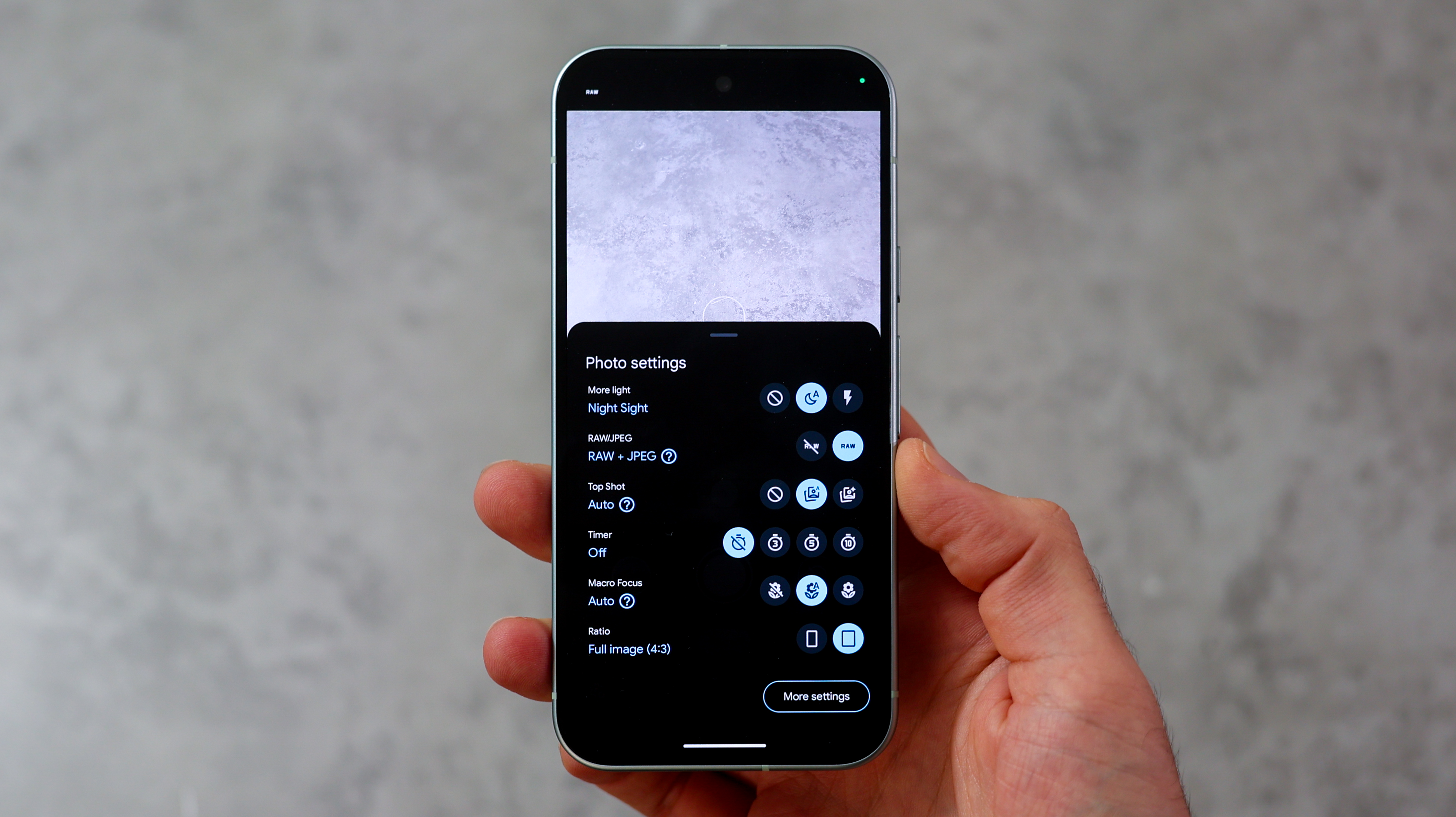
Other camera specs
While the Pixel 9 Pro benefits from an upgraded 42MP front camera, the Pixel 9's selfie camera pares things back with a 10.5MP, f/2.2 camera with a 20mm equivalent focal length and a modest 1/3.1-inch sensor. It does have autofocus, offering some versatility; however, just like the rear cameras, it also misses out on Video Boost.
The Pixel 9 captures 4K video at up to 60fps in standard definition, or 30fps HDR 4K video. With no Video Boost, it can't capture 8K video like the 9 Pro.
Google Pixel 9: camera review
Just like the 9 Pro and 9 Pro XL, the biggest improvements to the Pixel 9's stills over the Pixel 8 are panoramas and cleaner AI processing.
Google's photo processing loves to pull out shadow detail while being respectful of colors – not ramping up saturation too much – and applying sharpening without making shots look too crunchy. This makes for a consistent, reliable experience that might not always pull out the most croppable or high-impact shot, but it typically results in a good one.
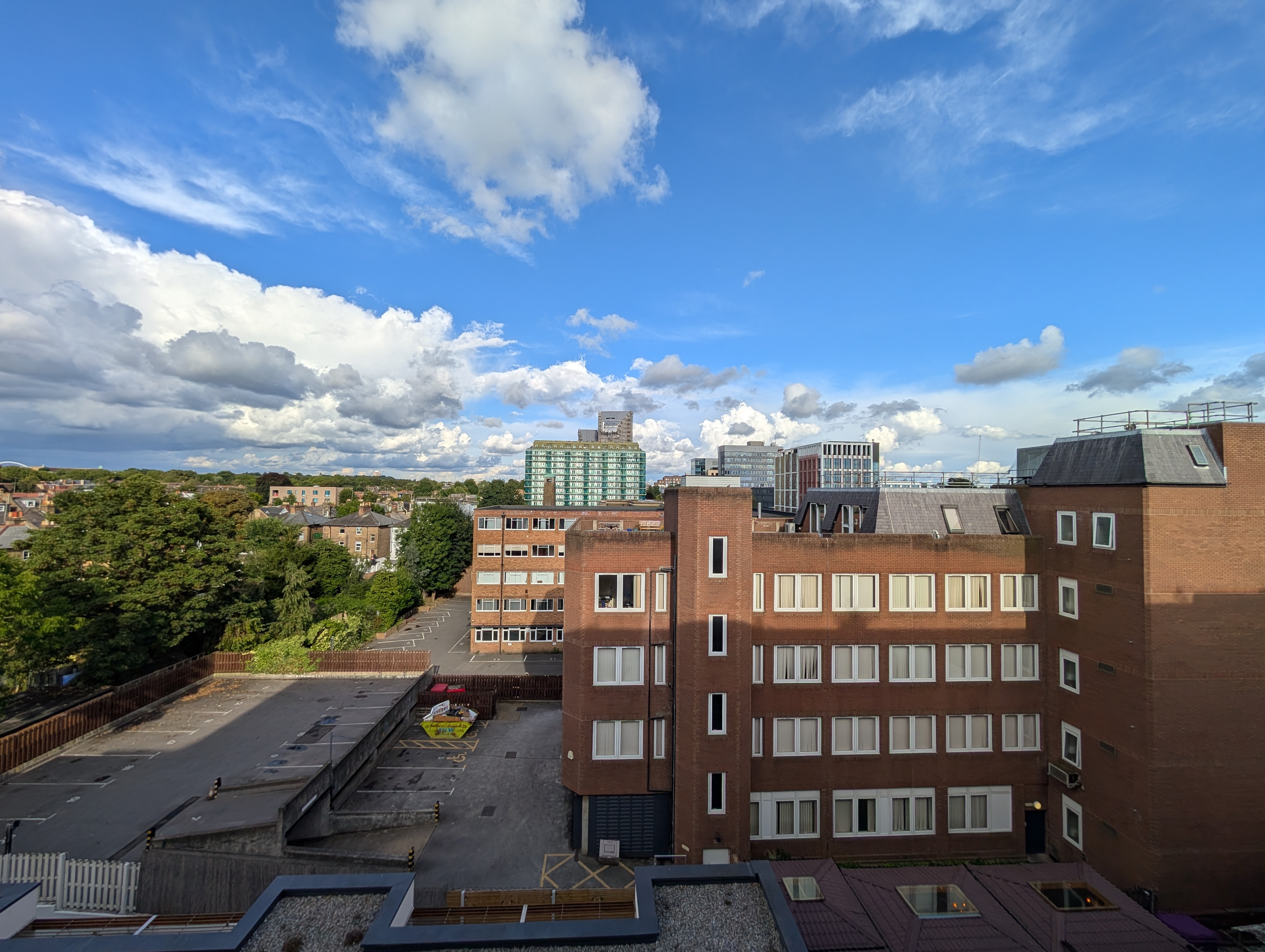



Google Pixels have long-been camera phones that take excellent pictures until you pinch into the details or crop heavily. Once you do, results won't always hold up as well as the best from Oppo, Vivo, or Xiaomi, but for reliability, the Pixel 9 is a great value choice.
For 9 Pro owners, it's easy to grab a bit more detail by firing up 50MP capture, but that's disabled on the vanilla Pixel 9; this seems like a software handicap too far as many budget phones support this feature, but at least Google has enabled RAW capture, so you can tweak your snaps to crisp them up if needed.
One area in which Pixel cameras edge ahead is night photography, and the Pixel 9 is no exception. Alternatives like the Samsung Galaxy S24 can create muddy-looking shadows when the lights drop, but the Pixel 9 series strikes a better balance across both the wide and ultra-wide cameras.


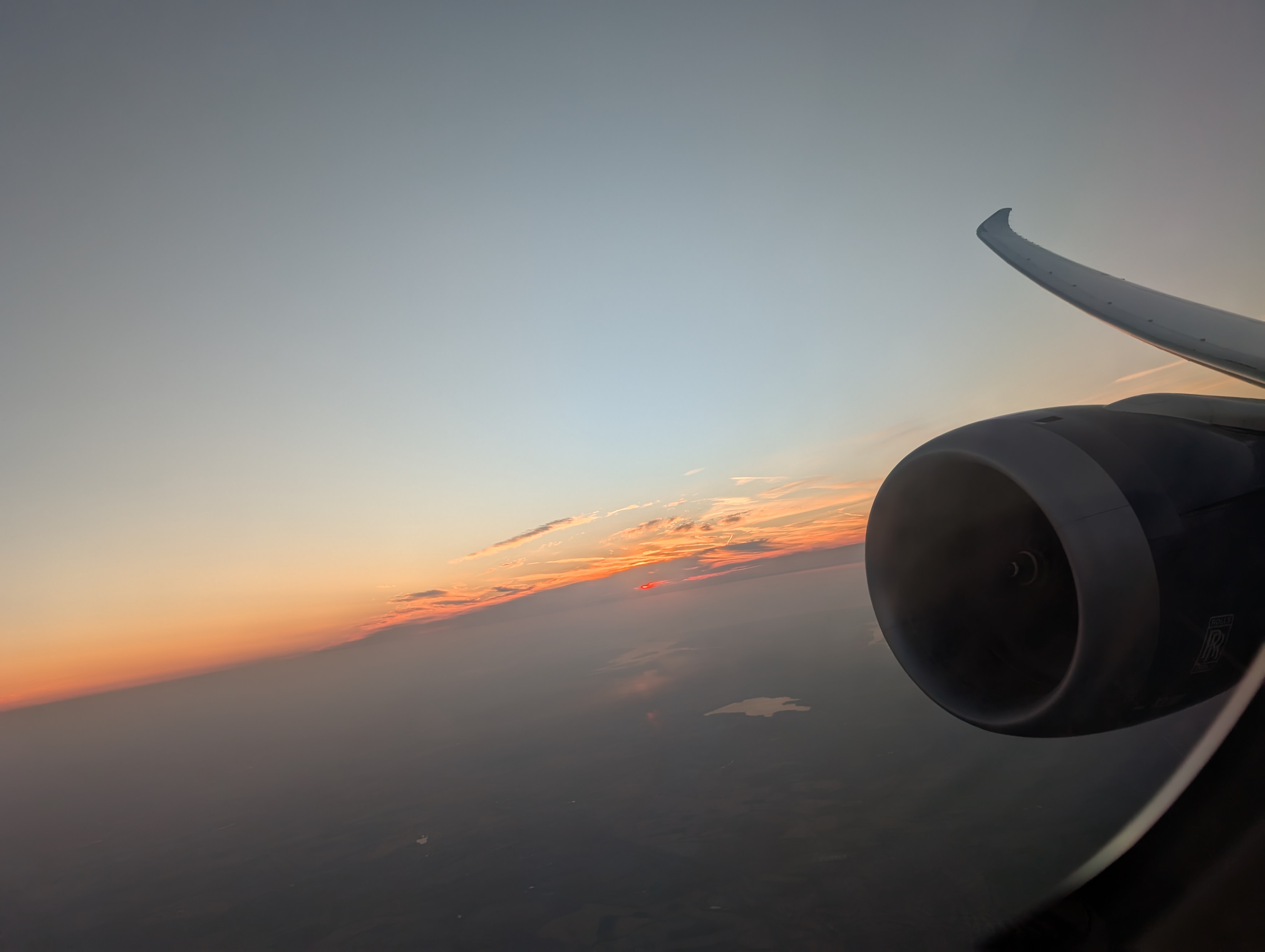
Google has also upgraded the panorama mode for the Pixel 9 series, capturing multiple stills and stitching them together instead of grabbing a smooth sweep to get your shot. On-screen prompts guide you through the process, and by incorporating computational photography, the Pixels capture the best night panoramas we've seen on a smartphone.

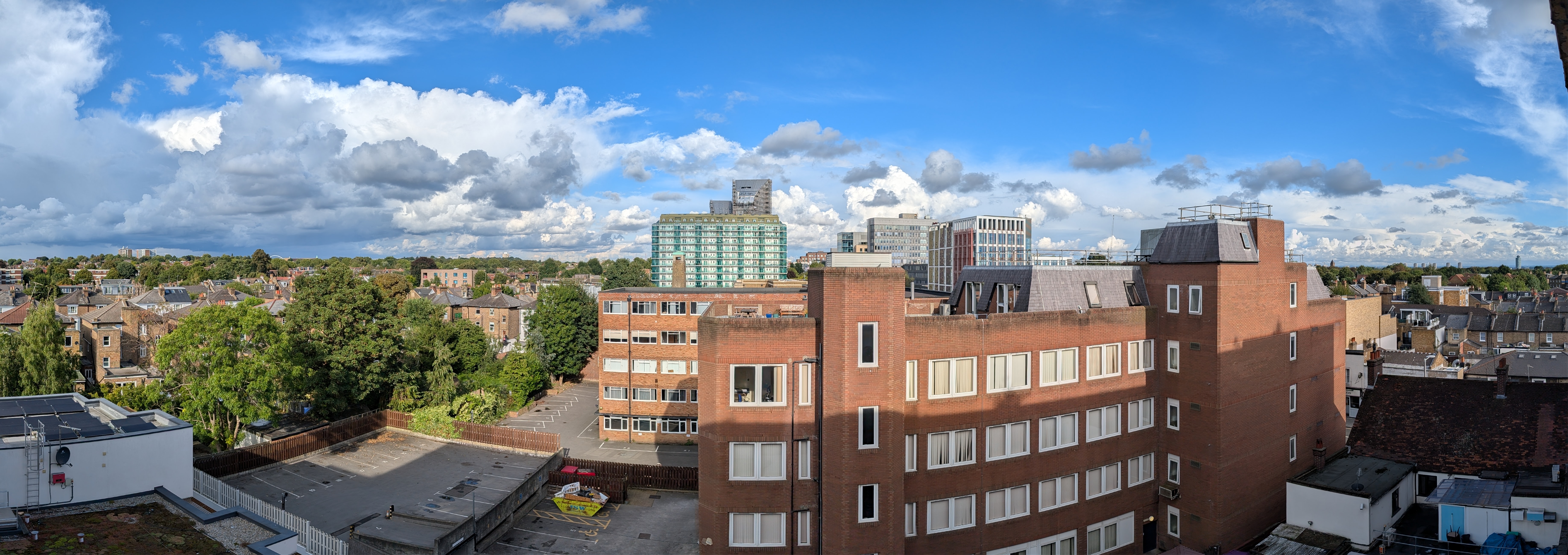
Where the Pixel 9 falls behind the 9 Pro, 9 Pro XL, and similarly priced competition with dedicated periscope zooms like the OnePlus 12 is telephoto reach. The phone supports an in-sensor and digital zoom of up to 8x, and results look good up to between 3-4x in bright environments. Any further, though, and you can see AI at play cleaning up edges and creating block colors in place of gradients.
With its 1/1.3-inch sensor, the primary camera is an excellent go-to for rich-looking depth of field when photographing any subject nearer than 1m away, while the ultra-wide can create some depth when a subject is super-close, at around 10cm or less.



Selfies taken on the Pixel 9 look great, particularly when shot in bright environments, and while vlogging doesn't look quite as crisp and the 9 Pro definitely edges ahead, Google's front-camera algorithms do a great job of prioritizing faces and skin tones.
One area that might sway you in favor of the Pixel 9 Pro over the Pixel 9 is video quality, and specifically, the lack of Video Boost. Don't get us wrong, the Pixel 9 can capture excellent-looking footage across both its cameras. However, we ended up using the Pixel 9 Pro's Video Boosted footage to capture everything from a climber in the distance to a swimmer in an underwater tank, featuring the footage in a commercial video and the client loved it. Those types of clips wouldn't have been possible with the Pixel 9, particularly the zoomed-in footage.
Google Pixel 9: AI Imaging
Despite not getting Video Boost and Zoom Enhancer, the Pixel 9 doesn't miss out on the series's image capture and editing tools like Best Face, Magic Editor (both introduced last year), and the new Add Me.
Add Me lets subjects in a group photo take a photo with everyone using the primary camera by compositing images. This works to great effect in simple setups, though more complex group shots overwhelm it. It's also significantly less spontaneous than a selfie, but is a fun party trick and can be excellent for more creative, playful group shots.



Magic Editor has also been upgraded, so 2024 Pixel owners can reframe an image using generative AI, breaking through the border and using photography principles to get subjects in the best position. This was very useful, and the feature is a dab hand at accurately creating organic shapes and elements like arms. It struggled more with patterns like a chequered shirt, for example.


The final editing highlight to focus on for the Pixel 9 Pro series is Reimagine. Select a portion of your picture in Magic Editor and use a text prompt to make edits. As you can see above, the results are fantastical. While this shot, in particular, took a couple of retries to get it to look borderline realistic, it's hard not to be impressed at the ease with which such transformations are now possible.
Google Pixel 9: Additional Features
The Google Pixel 9's AI features don't stop with image editing. Open Pixel Studio for full-on text-to-image generation. This supports a range of styles: Freestyle, 3D Cartoon, Video Game, Cinematic, Sketch, Anime, and Sticker.
As you can see below, the results can look like a very convincing illustration. There's definitely a question to be asked: what does Pixel Studio mean for creatives? Feeding into the broader responsible AI debate. Google also doesn't watermark its AI-generated Pixel Studio pieces, or specify what it uses to train its AI image generation models.
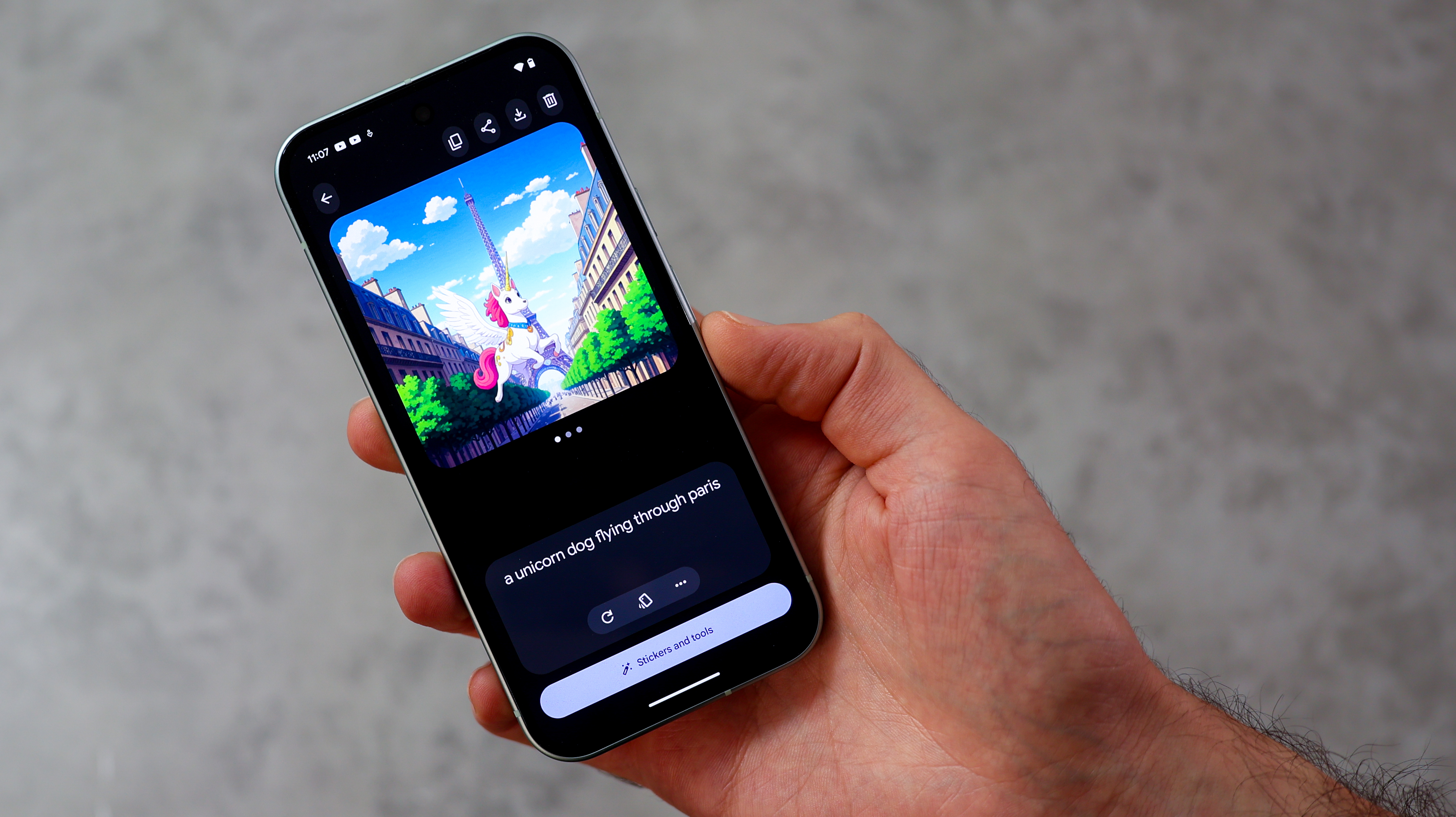


All the new Pixels pack the same Tensor G4 chipset, and over a week with the Pixel 9, and even more time with the 9 Pro and 9 Pro XL, one aspect we are seriously impressed with is performance. We're not talking about gaming grunt, but rather battery and heat management.
Past Pixels have suffered at the hands of Tensor chips. Frequently overheating and inconsistent with battery performance, since the Pixel 6 introduced the Tensor G1, built in partnership with Samsung's chipmaker division, Exynos, Pixels were falling behind their Qualcomm rivals when it came to performance and stability.
While the gaming performance of the new pixels is significantly weaker than the Qualcomm Snapdragon 8 Gen 3 competition, stability – which is much more important – is significantly improved. Even with hours of gaming and WiFi hotspotting, our Pixel 9 didn't overheat, which is excellent going. Just bear in mind that you won't be able to ramp up the graphics quality in top-tier titles like Genshin Impact for any significant period of time.
The Pixel 9's starting storage of 128GB falls behind the 256GB as standard we're seeing from much of the competition. With no expandable storage, there's every chance you'll fill up the internal storage before you're ready to upgrade your Pixel 9 if you capture a lot of 4K video and play high-capacity games.
It's great to see Google include fast 45W wired charging for the Pixel 9, 9 Pro Pro, and 9 Pro XL, with the Pixel 9 reaching a full charge in around 80 minutes. The Pixel 9 also supports 15W wireless charging, though no magnetic charging mounts a la MagSafe or Qi2.
Google Pixel 9: Verdict
The Google Pixel 9 is a great phone. It looks good, can be picked up in fun or traditional colors, feels premium, is relatively durable, lasts a full day on a single charge, and the screen is as good as it needs to be.
You can get more hardware for less from the OnePlus 12, Nubia Z60s Pro, Z60 Ultra and Vivo X40 Pro, however, none pack the long-term software support Google does, or the point-and-shoot reliability.
All this means the Pixel 9 could be the best camera phone of 2024 at its price. A great shout for anyone who doesn't want to think too hard about their photos, just make sure you pick up the 256GB option if you anticipate needing the extra storage.
While we've always enjoyed Google's Pixels, it feels like for 2024, they've overcome their biggest hurdle – heat and power management – making the Pixel 9, 9 Pro, and 9 Pro XL easier to recommend than any of their predecessors.
Basil Kronfli is a freelance technology journalist, consultant, and content creator. He trained in graphic design and started his career at Canon Europe before moving into journalism. Basil is also experienced in video production, independently running the YouTube channel TechEdit, and during his time at Future, he worked alongside the Digital Camera World team as a senior video producer.







